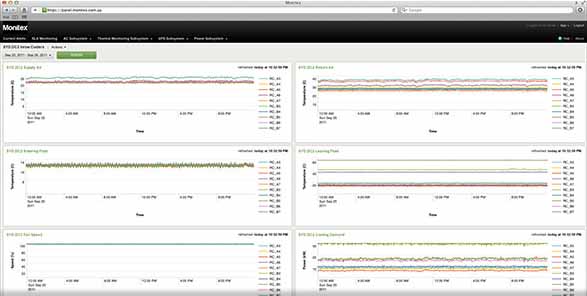Putting SLAs into datacentre monitoring

While working as an engineer on computing grids for SteamEngine, which provides computing power to create the digital effects for films like Happy Feet 2, John Painter discovered a hole in the market for datacentre monitoring.

(Credit: Monitex)
The issue is that for this sort of project, where a grid might only be needed for a certain amount of time, it isn't time effective to build an in-house product to monitor performance. Meanwhile, the products that can be bought are often too expensive.
So when the SteamEngine render grid he'd been working on was shut down at the end of a project, Painter decided to develop his own monitoring product: Monitex. Putting his own money and six months into the project, he came up with a product that he brought to market last week, which is aimed at mid-market datacentre operators.
He's had no venture capital (VC) funding, so, at this point, the company is all his.
His product is an as-a-service offering, so customers pay a monthly fee instead of an upfront payment, which helps providers that want to put up a grid quickly. The fee depends on the amount of infrastructure and the size of the space, according to Painter.
A typical monitoring and reporting solution for a 100- to 150-rack facility, including consulting, installation, on-site data-collection devices, 10 wireless sensors, up to 10,000 on-board infrastructure sensors and unlimited custom dashboards, is approximately $2000 per month on a one-year contract. Painter compared this to a company he knows of, which has to pay $250,000 per datacentre up-front for a monitoring product.
When a customer decides to come on-board, Monitex plans and designs the architecture of the platform for the customer. Wireless sensors are then clipped on to temperature and humidity monitors, door alarms, fluid detectors and motion tags.
Painter said that his product is different to other solutions, because it shows datacentre performance on dashboards in terms of business metrics.
Most customers in a datacentre typically want to know whether the power is on, and whether the temperature is within a certain level, he said, as this is a part of the service level agreement (SLA) signed. Datacentre owners also want to know this, to see whether they are liable for pay-outs.
Painter's dashboards show how a space is tracking on these customised SLAs in a C-level dashboard arrangement. There are also more detailed operational views that can be accessed using the dashboards, where the Monitex product displays live data from the infrastructure.
SLA monitoring is especially useful for datacentre providers that are leasing part of their datacentre, to ensure that they are receiving a level of service from that datacentre to meet their customers' needs, Painter said. The Monitex product can also be white labelled, so that customers can see the metrics.
Harbour MSP has been a pilot customer of the product, trialling it for six months and providing feedback for the end result.
"With the Monitex trial, we have significantly increased the level of visibility we have to our providers. SLA breaches are caught as they occur; accurate C-level reports are generated in real time; and, importantly, these events are automatically calculated and integrated with our financial and customer systems," Andrew Hardy, commercial director at HarbourMSP, said in a statement.
The dashboards can be viewed over tablet browsers, Painter said, making the product mobile for executives.
So far, Painter has had interest from two to three datacentre operators and from a large financial-services company, he said.